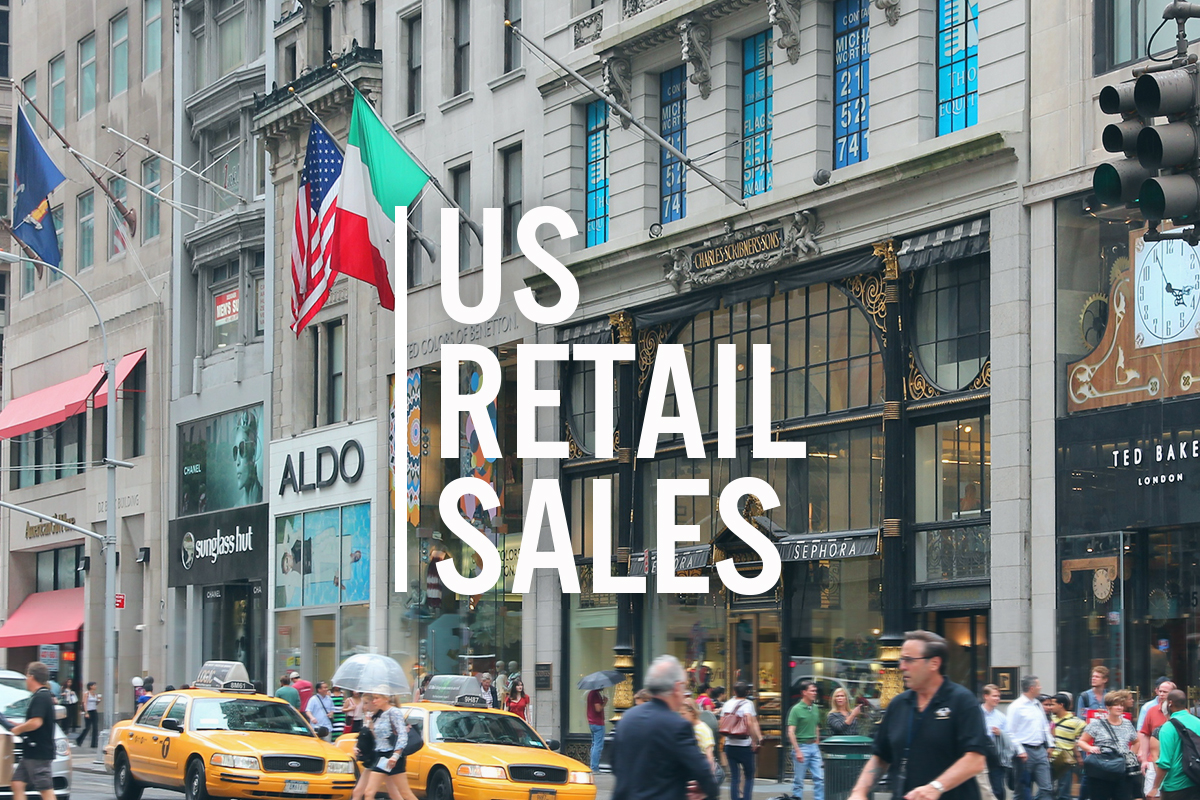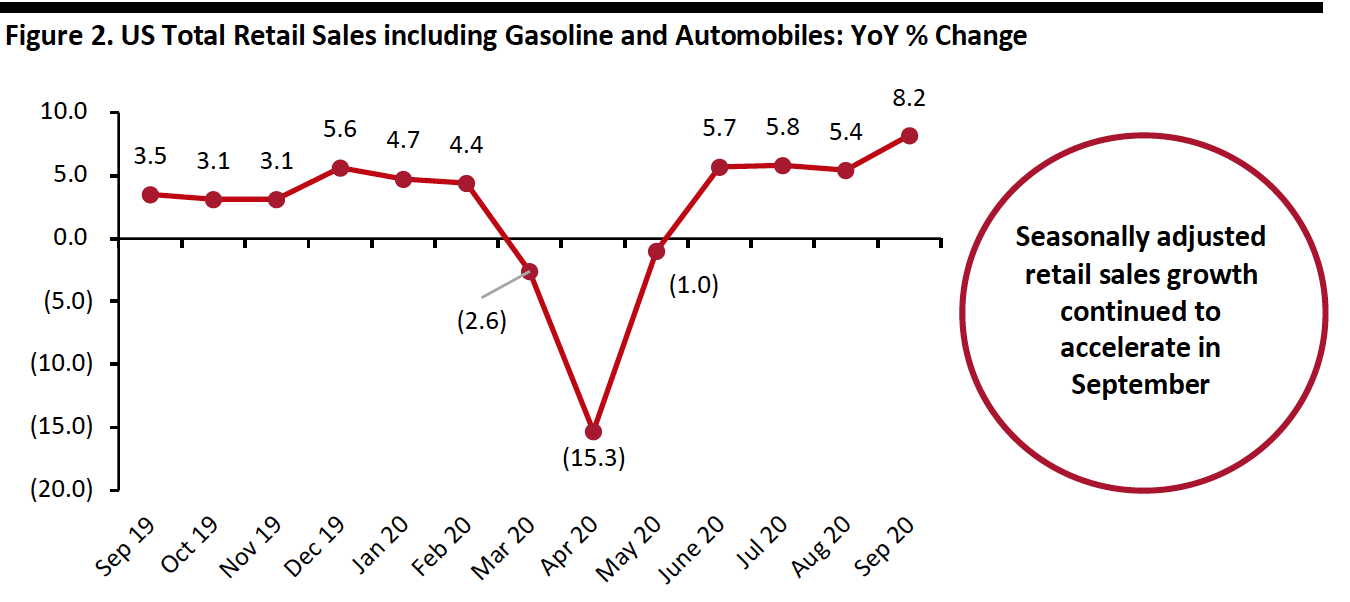
albert Chan
Amid still difficult circumstances, US retail sales saw an extraordinary year-over-year jump in September, with the growth rate more than doubling compared to August, fueled by strong growth in several sectors.
Coresight Research’s measure of core retail sales is the unadjusted year-over-year change, excluding gasoline and automobiles. This metric stood at a solid 12.1% in September versus August’s 5.8% rate (which was revised up from a first estimate of 5.6%). The strongest growth was seen by nonstore retailers, home-improvement retailers and sports and leisure goods retailers, as we discuss later, suggesting strong demand for a number of discretionary categories—apparel stores saw an easing of sales declines.
The strength of performance in September supports our expectations for a solid increase in total retail sales during the holiday season.
In the US, temporary store closures began in the week of March 8–14 and peaked in the week of March 15–21. Stores began to reopen in May following the easing of Covid-19 lockdowns by states and local governments. The reopening of US retail stores peaked in early June. In July, some states paused or rolled back reopening plans in the third and fourth weeks due to spikes in coronavirus cases. However, in August, the reopening of US retail stores improved, compared to the previous month—even as coronavirus cases continued to rise. In September, the reopening of US retail stores improved further, with many states resuming the reopenings of indoor malls as the number of coronavirus cases reduced month over month.
[caption id="attachment_117823" align="aligncenter" width="700"] Data are not seasonally adjusted
Data are not seasonally adjustedSource: US Census Bureau/Coresight Research[/caption]
Retail Sales Increase Month over Month
The Census Bureau’s core metric is seasonally adjusted retail sales including automobiles and gasoline. Year-over-year sales growth by this measure stood at 8.2% in September, up from August’s revised 5.4%.
On a month-over-month basis and seasonally adjusted, retail sales increased by 1.9% in September.
[caption id="attachment_117824" align="aligncenter" width="700"] Data are seasonally adjusted
Data are seasonally adjustedSource: US Census Bureau[/caption]
Retail Sales Growth by Sector
A number of sectors saw strong sales growth:
- Home-improvement stores (building-material and garden-supply retailers) saw a 23.4% increase, following August’s 13.0% growth. This impressive growth supports our expectation that home-improvement retailers will be the fastest-growing store-based nonfood sector this year.
- Sports and leisure goods retailers saw an 18.3% increase in sales versus August’s 6.0% growth. This sector is a mix of diverse nonfood subsectors and reflects a jump in demand for selected discretionary categories such as fitness equipment, even as clothing and department stores saw sales decline year over year (see below).
- Even with more stores being open, nonstore retailers maintained strong growth momentum, including for essentials. The sector, which includes e-commerce firms, saw sales grow by 27.0% in September, following August’s 20.5% increase. This sector also includes online sales from some store-based retailers that separate this business from their store-based operations.
- Sales at grocery stores grew 10.5% in September, remaining slightly below the overall food sector’s 11.5% growth.
A few sectors posted high-single-digit sales growth:
- Health and personal care stores saw sales increase by 7.8% in September, up substantially from August’s 1.0% growth.
- Furniture and home-furnishing stores posted a 7.5% sales increase in September versus 1.7% growth in August.
Some structurally challenged sectors remained negative in September; however, they saw a substantial easing of sales declines. These included clothing stores and department stores.
- Clothing-store sales declined by 12.0% in September after plunging 24.6% in August, representing a 51.2% increase sequentially (a percentage on a percentage, not a percentage-point increase). This compares to sequential improvement of 50.6% for department stores, on the same basis. For 2020, we expect the clothing-store sector to underpace growth in consumer spending on apparel.
- Sales at department stores (a subset of general-merchandise stores and weighted toward apparel) declined by 8.2% in September versus August’s 16.6% fall.
 Data are not seasonally adjusted
Data are not seasonally adjustedSource: US Census Bureau/Coresight Research[/caption]